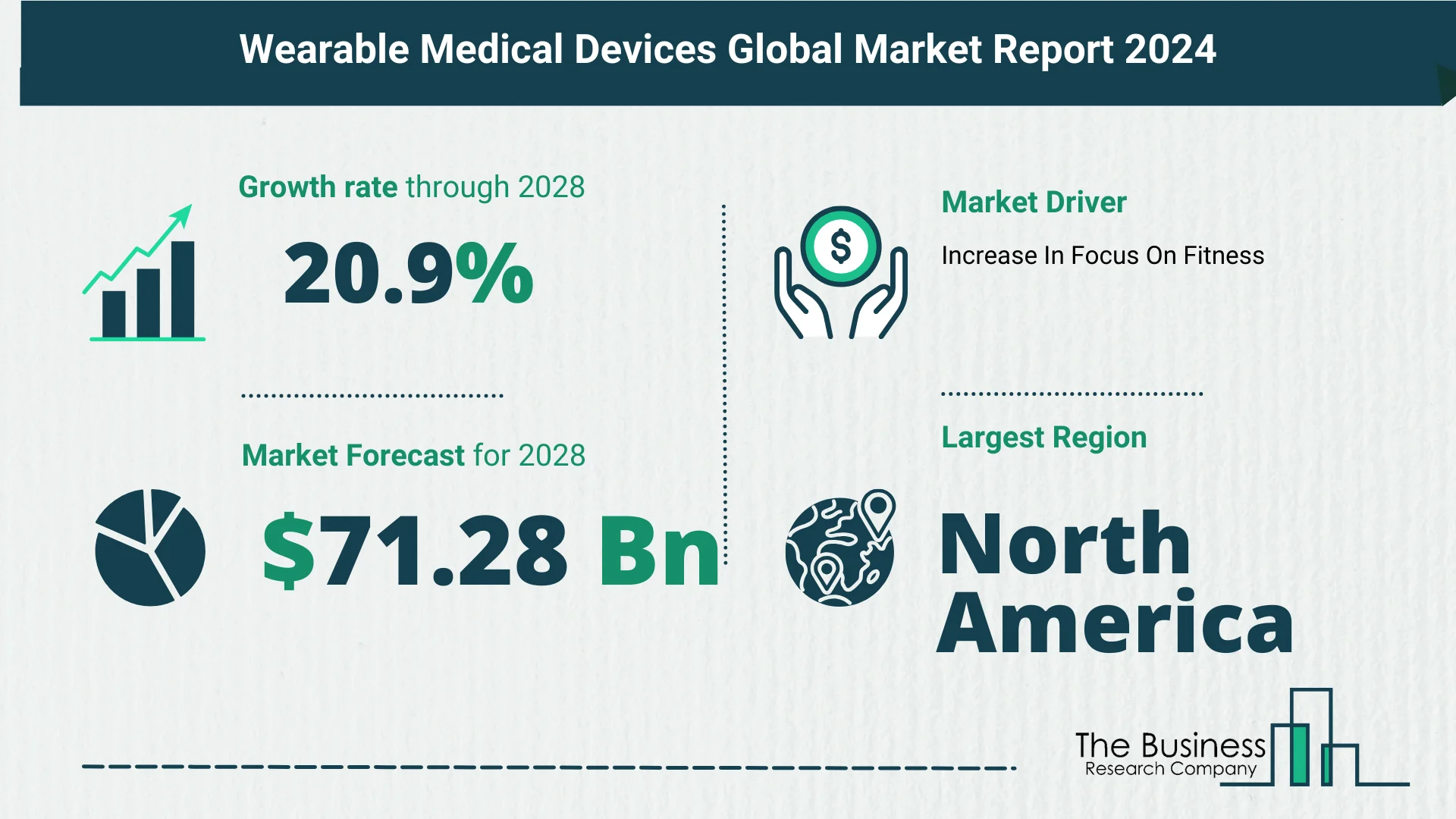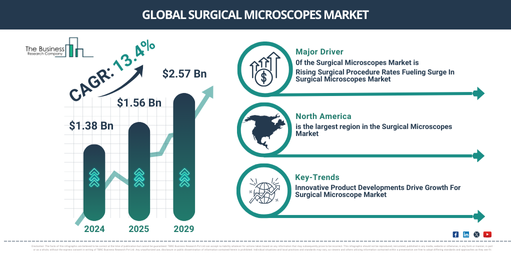5 Key Insights On The Wearable Medical Devices Market 2024
The Business Research Company’s global market reports are now updated with the latest market sizing information for the year 2024 and forecasted to 2033
As per The Business Research Company’s Wearable Medical Devices Global Market Report 2023, the wearable medical devices market is expected to show significant growth in the forecast period.
The wearable medical devices market has witnessed exponential growth, with the market size projected to increase from $27.37 billion in 2023 to $33.37 billion in 2024 at an impressive Compound Annual Growth Rate (CAGR) of 21.9%. The surge in the historic period can be attributed to various factors, including the increasing focus on health and fitness tracking, chronic disease management, the aging population, and the adoption of remote patient monitoring technologies.
Unveiling the Future: Projections and Trends
The future of wearable medical devices looks even more promising, with the market expected to reach $71.28 billion in 2028, boasting a CAGR of 20.9%. This anticipated growth is fueled by factors such as preventive health and wellness, the expansion of emerging markets, regulatory support, reimbursement policies, and the integration of artificial intelligence (AI) and machine learning. Notable trends in the forecast period include advancements in vital sign monitoring, remote diagnosis and consultation, mental health monitoring, and the development of personalized health ecosystems.
Chronic Disease Management: A Driving Force
The Alarming Rise of Chronic Diseases
The surge in mortality rates attributed to non-communicable diseases has led to a significant increase in chronic diseases and lifestyle-associated conditions, such as hypertension and diabetes. Wearable medical devices play a pivotal role in managing these conditions by offering continuous and remote patient monitoring capabilities. With wearables that can be worn throughout the day, individuals can monitor vital signs, glucose levels, and more, contributing to better disease management.
Diabetes on the Rise
The International Diabetes Federation reports a staggering increase in the number of adults living with diabetes, reaching 537 million in 2021. Projections indicate that this number will rise to 643 million by 2030 and a staggering 783 million by 2045. The growing awareness of chronic diseases and the need for continuous monitoring are driving individuals towards wearable medical devices, fostering market growth.
Key Players: Powering the Wearable Revolution
Major companies driving the wearable medical devices market include industry giants like Philips, Fitbit Inc., Garmin Ltd., Xiaomi Inc., Medtronic PLC, Samsung, Apple Inc., and Alphabet Inc. These companies are at the forefront of innovation, developing cutting-edge wearable technologies to address the increasing demand for health and wellness solutions.
View More On The Wearable Medical Devices Market Report 2024
https://www.thebusinessresearchcompany.com/report/wearable-medical-devices-global-market-report
Innovation Spotlight: In-Ear Wearables
Revolutionizing Health Monitoring
Leading companies in the wearable medical devices market are focusing on innovation, with a particular emphasis on in-ear wearables. These small electronic devices worn in the ear track multiple health metrics simultaneously, providing real-time feedback to users. For instance, STAT Health launched an in-ear wearable blood flow monitor, STAT, equipped with an optical sensor to measure blood flow and automatically detect changes in heart rate, blood pressure trends, and blood flow to the head. This device, compatible with over 90% of ear-fitting devices, showcases the potential to forecast fainting episodes minutes before they occur, enhancing user safety.
Practical Advantages of In-Ear Wearables
In-ear wearables offer practical advantages, reducing the risk of users forgetting to reinstall the device. These wearables can be worn during sleep and showering, ensuring continuous monitoring without interruption. This innovation addresses common user concerns and enhances the overall user experience.
Market Segmentation: Understanding the Landscape
The wearable medical devices market is segmented based on device type, product type, distribution channels, and applications. Key segments include diagnostic and therapeutic devices, diverse product types like watches, wristbands, clothing, and ear wear, distribution channels spanning pharmacies, online platforms, and hypermarkets, and applications such as sports and fitness, remote patient monitoring, home healthcare, and ear wear.
Regional Dominance: North America Takes the Lead
North America emerged as the largest region in the wearable medical devices market in 2023. The region’s leadership is attributed to its robust healthcare infrastructure, technological advancements, and the widespread adoption of wearable technologies. As the market continues to evolve, North America remains a significant player in shaping the trajectory of wearable medical devices.
In conclusion, the wearable medical devices market is poised for remarkable growth, driven by advancements in technology, increased awareness of chronic diseases, and a shift towards preventive healthcare. Innovations such as in-ear wearables exemplify the industry’s commitment to enhancing user experience and delivering cutting-edge solutions. With substantial projections and ongoing trends, the wearable revolution in healthcare is set to transform the way individuals monitor and manage their health.
Request A Sample Of The Global Wearable Medical Devices Market Report 2024:
https://www.thebusinessresearchcompany.com/sample_request?id=3976&type=smp



